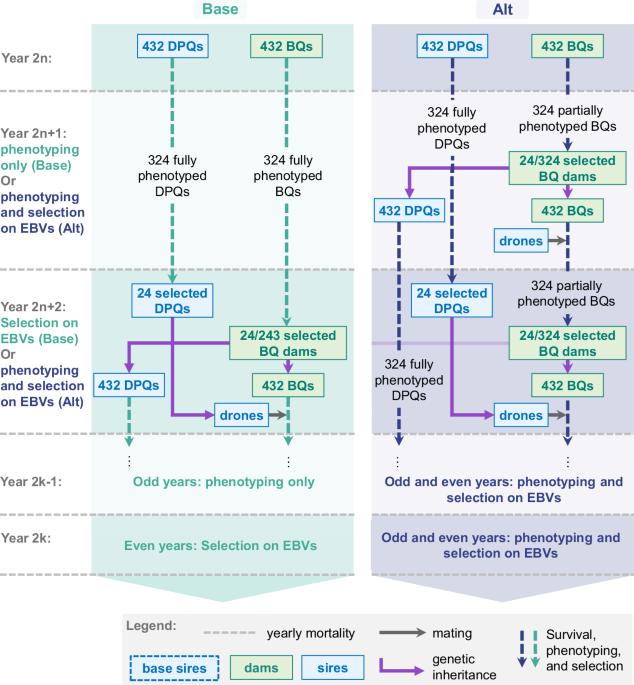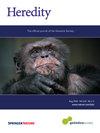How partial phenotyping to reduce generation intervals can help to increase annual genetic gain in selected honeybee populations
IF 3.9
2区 生物学
Q2 ECOLOGY
引用次数: 0
Abstract
Honeybee breeding is organized around annual cycles, following seasonal change. Generation intervals are thus commonly multiples of whole years. Most queens are generally raised during spring or early summer in temperate climates. A generation interval of 1 year limits phenotyping to early recordable traits, before the spring following queens’ births. Some traits, however, can only be recorded later, as is typically the case for total honey yield. Their recording on selection candidates thus increases the generation interval to at least 2 years, a common interval on the dam path. Using stochastic simulation, we investigated the impact of halving the dam generation interval and therefore recording only early traits on candidate dams. The generation interval on the sire path remained at 2 years with complete phenotyping. Breeding goals with varying weights on early and late traits were considered, as well as negative to positive genetic correlations between traits. The acceleration of the breeding scheme generally increased genetic gain for two-trait breeding goals, from 0% up to +47% after 20 years of selection. Although inbreeding rates per generation were slightly lower in the accelerated breeding scheme, inbreeding rates per year were significantly higher. This was due to the faster generation turnover (+33%) leading to 20–30% higher inbreeding coefficients (+0.04 to +0.07) after 20 years of selection. To avoid too high inbreeding, shortening the generation interval should be accompanied by strategies to limit inbreeding while still retaining most of the genetic gain, such as increasing the breeding nucleus size by relaxing selection intensity.

减少世代间隔的部分表型如何有助于增加选定蜜蜂种群的年遗传增益。
蜜蜂的繁殖是根据季节变化,按年循环进行的。因此,发电间隔通常是全年的倍数。大多数蜂王通常在春季或初夏在温带地区饲养。1年的世代间隔限制了表型的早期可记录的性状,在春季蜂王出生之前。然而,有些性状只能在以后记录,就像总蜂蜜产量的典型情况一样。因此,它们在选择候选者上的记录将产生间隔增加到至少2年,这是大坝路径上的常见间隔。使用随机模拟,我们研究了水坝产生间隔减半的影响,因此只记录候选水坝的早期特征。在父系路径上的世代间隔保持在2年,表型完整。考虑了早期和晚期性状权重不同的育种目标,以及性状间的负相关和正相关遗传关系。育种计划的加速通常会增加双性状育种目标的遗传增益,经过20年的选择,遗传增益从0%增加到+47%。虽然加速育种方案的每代近交率略低,但年近交率明显较高。这是由于在20年的选择后,更快的世代更替(+33%)使近交系数(+0.04 ~ +0.07)提高了20 ~ 30%。为了避免过高的近交,在缩短世代间隔的同时,应采取限制近交的策略,同时保留大部分遗传增益,如通过放松选择强度来增加育种核的大小。
本文章由计算机程序翻译,如有差异,请以英文原文为准。
求助全文
约1分钟内获得全文
求助全文
来源期刊

Heredity
生物-进化生物学
CiteScore
7.50
自引率
2.60%
发文量
84
审稿时长
4-8 weeks
期刊介绍:
Heredity is the official journal of the Genetics Society. It covers a broad range of topics within the field of genetics and therefore papers must address conceptual or applied issues of interest to the journal''s wide readership
 求助内容:
求助内容: 应助结果提醒方式:
应助结果提醒方式:


